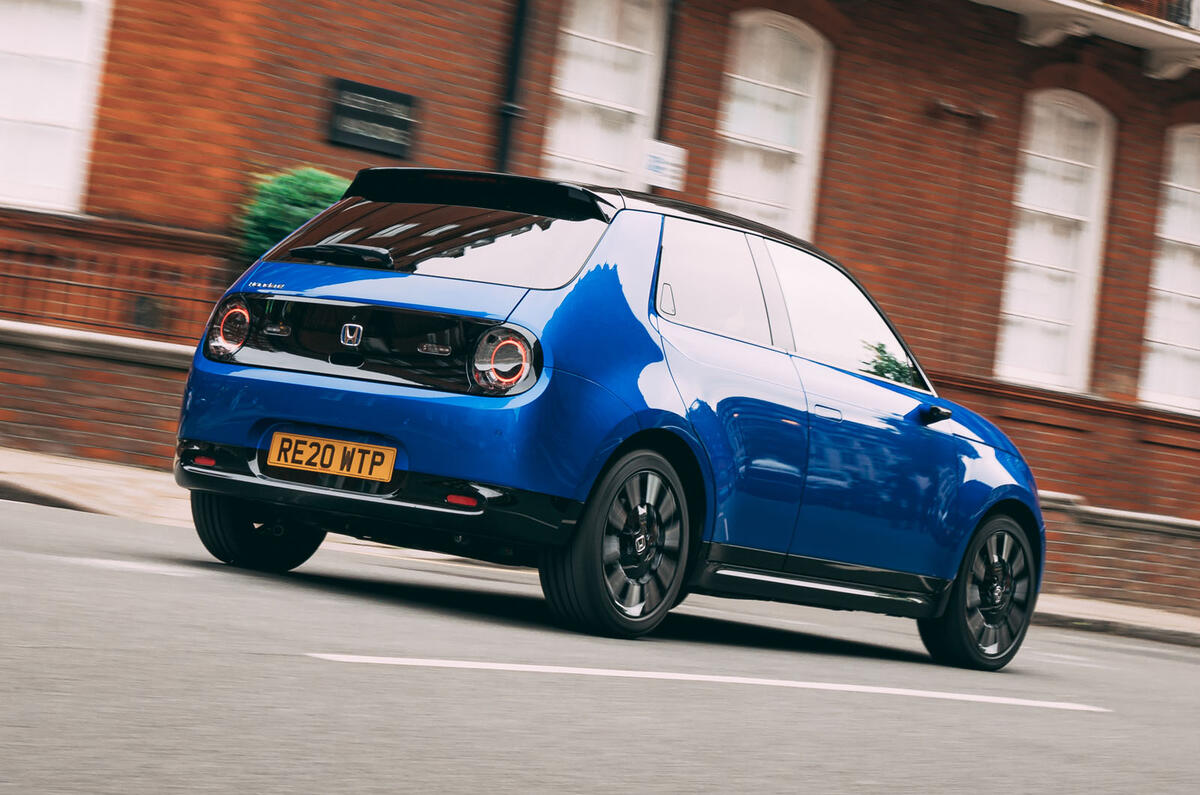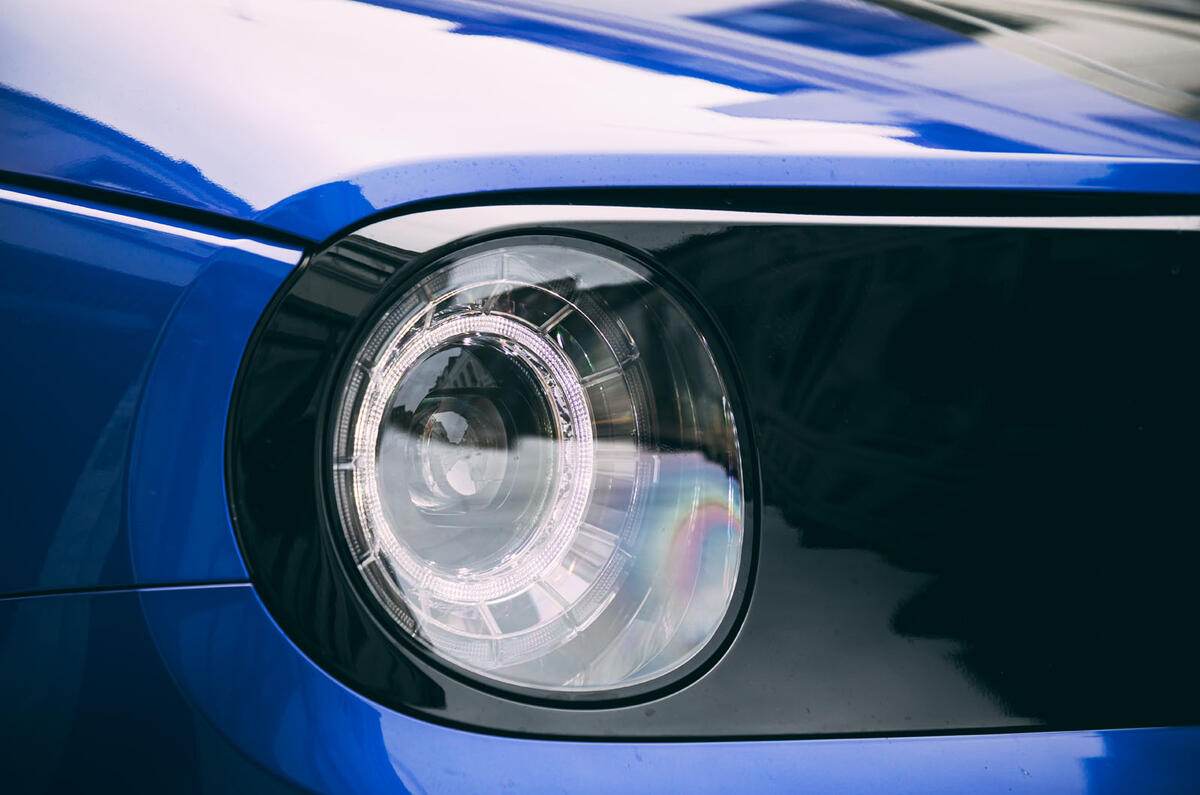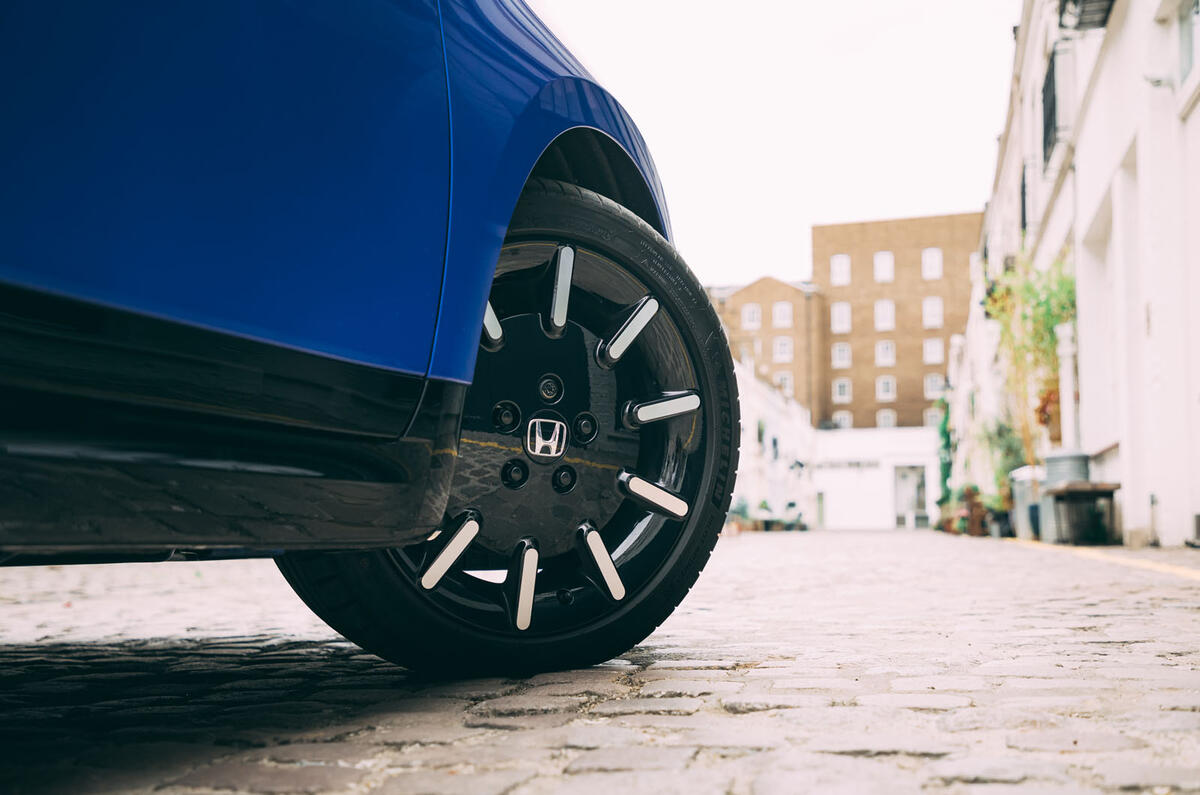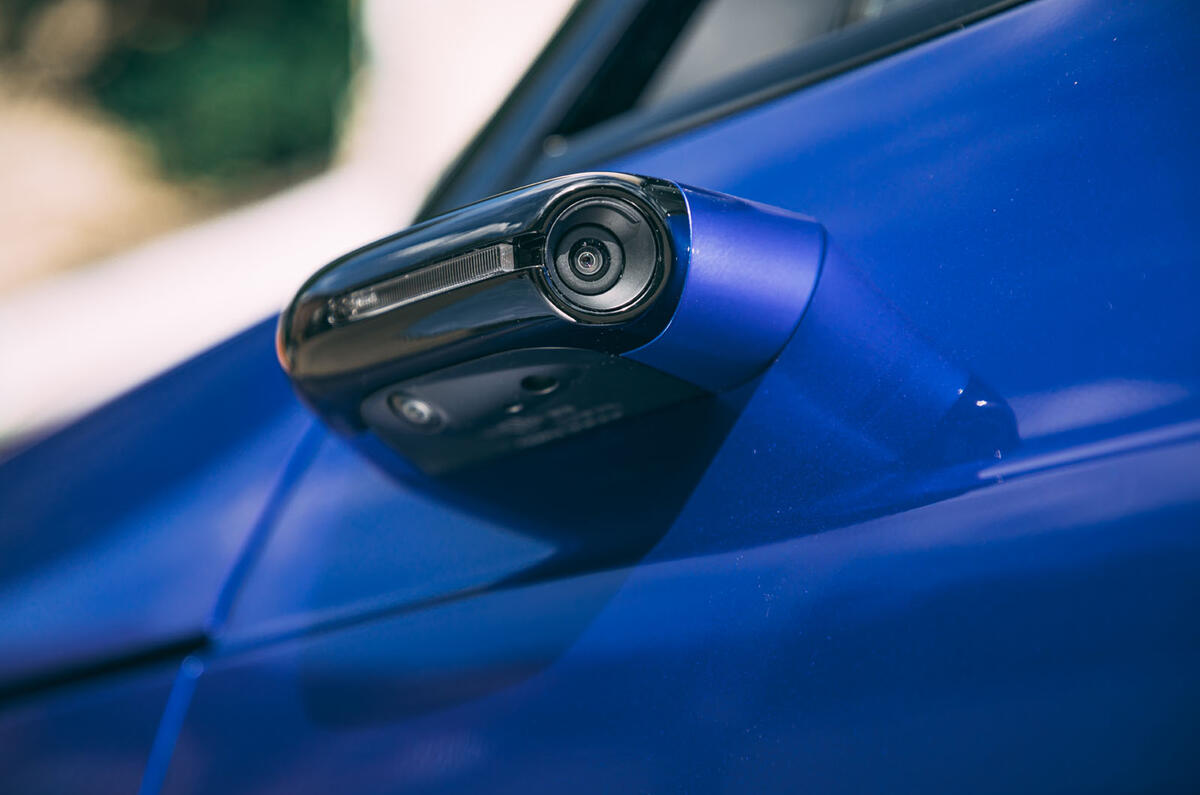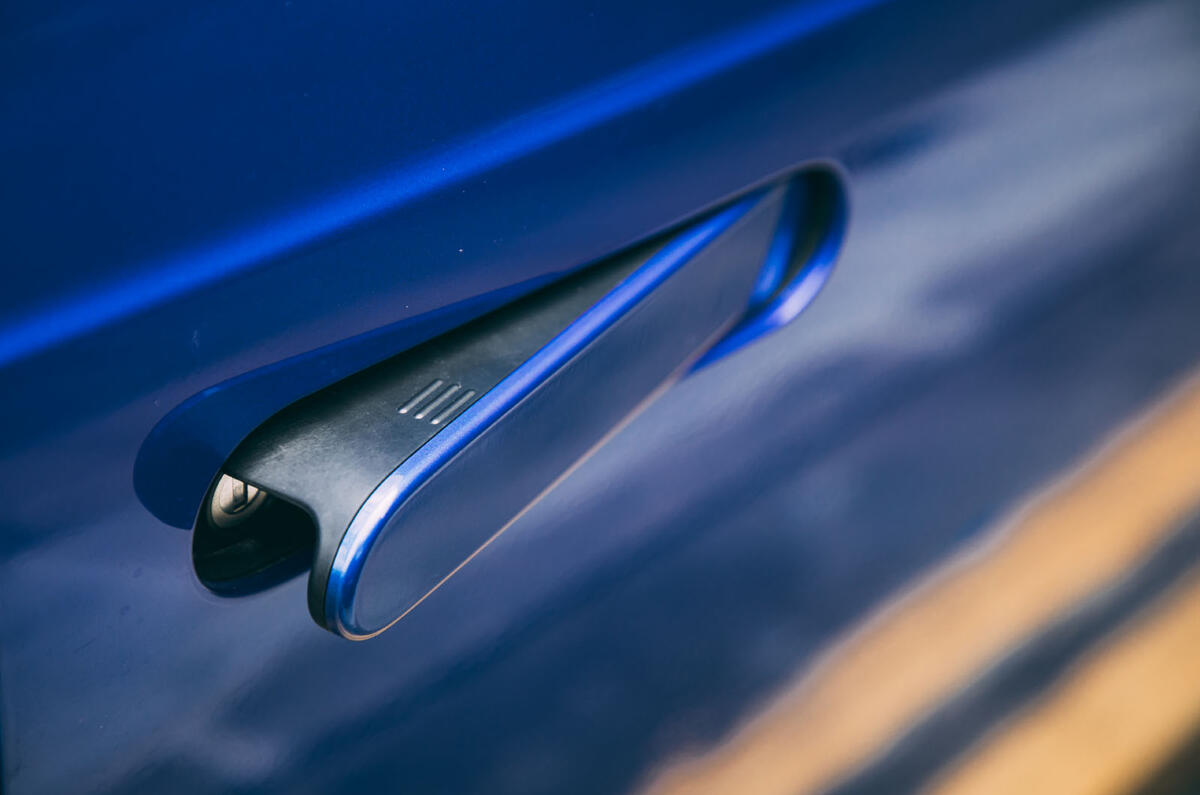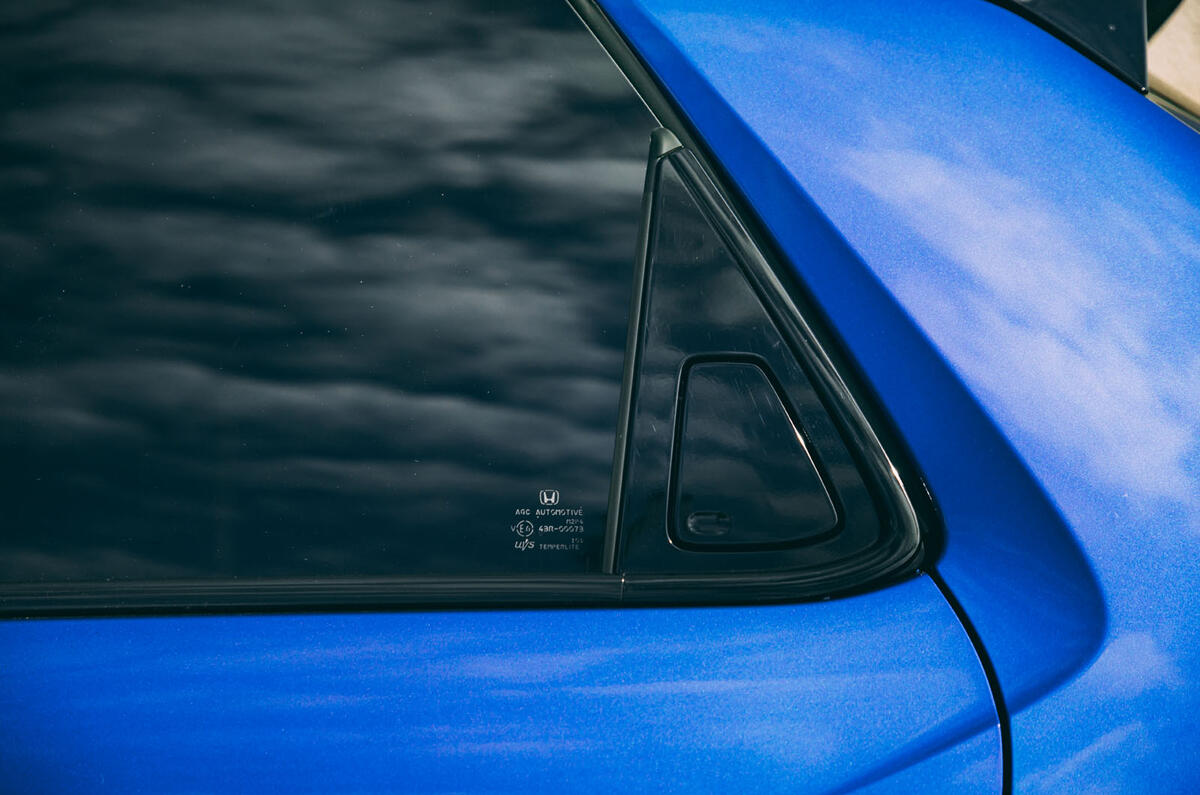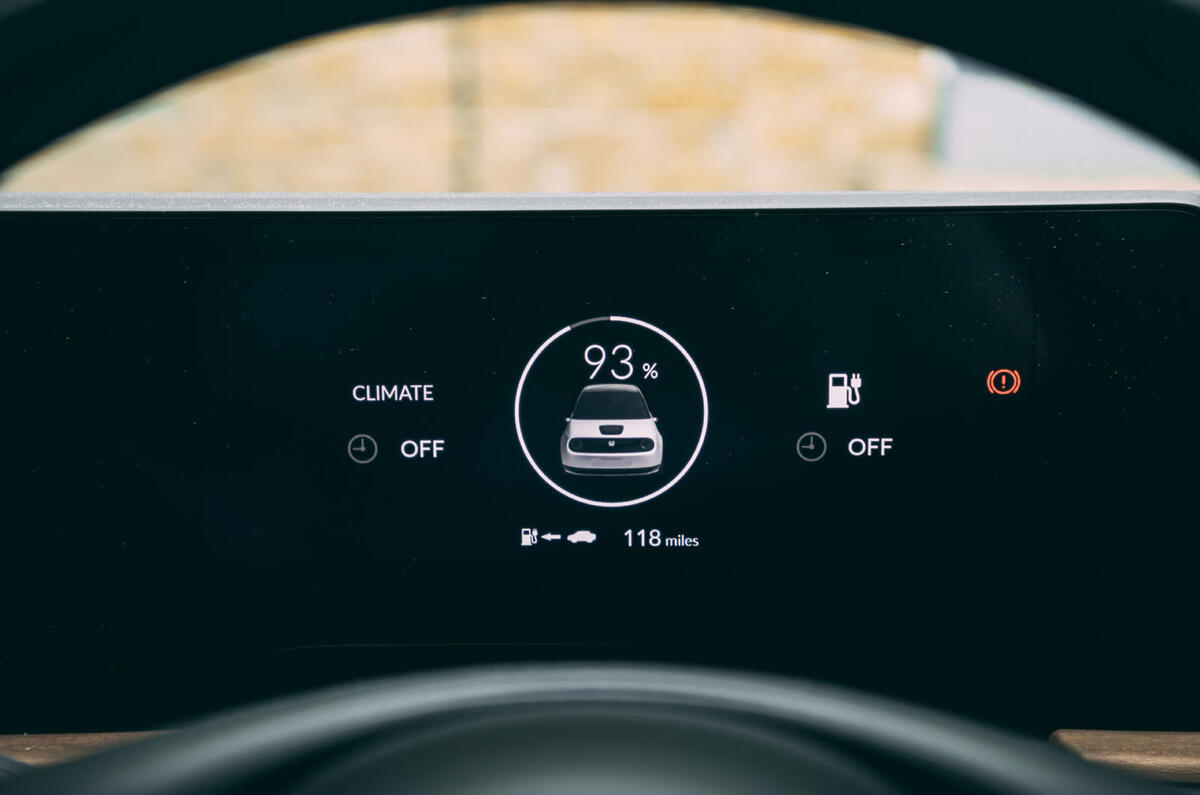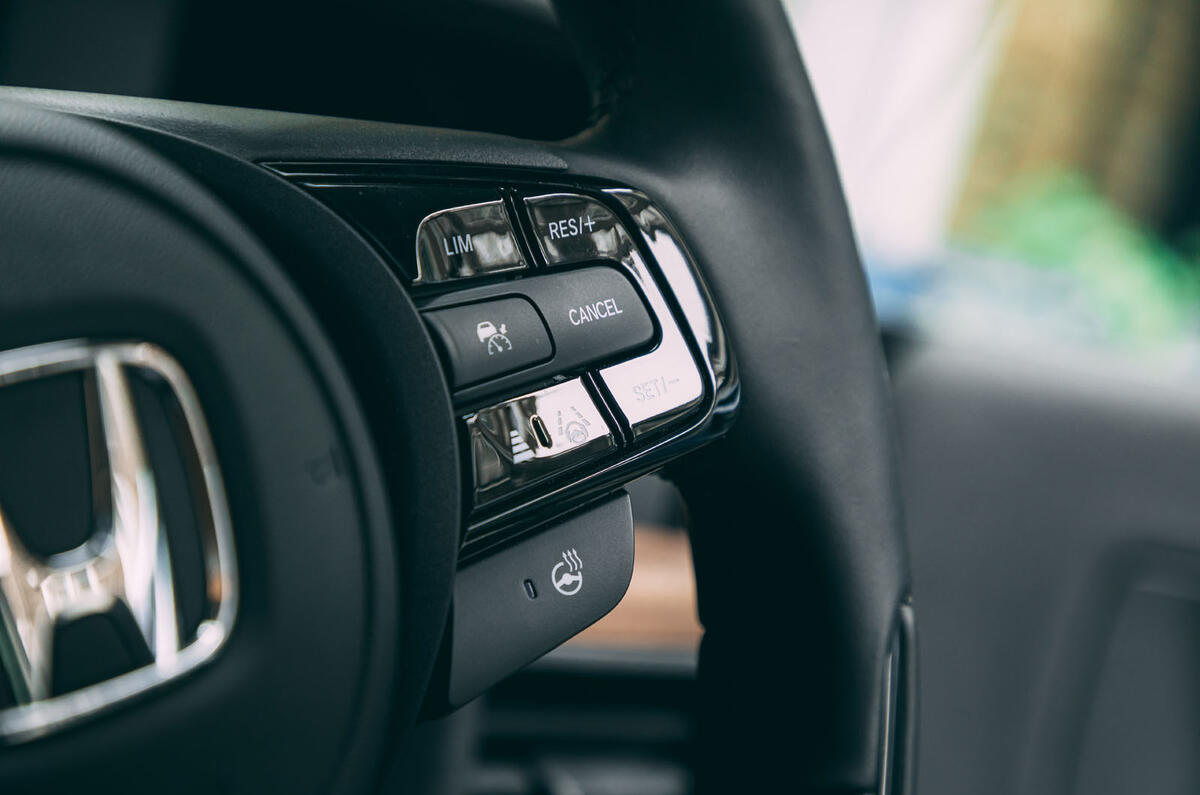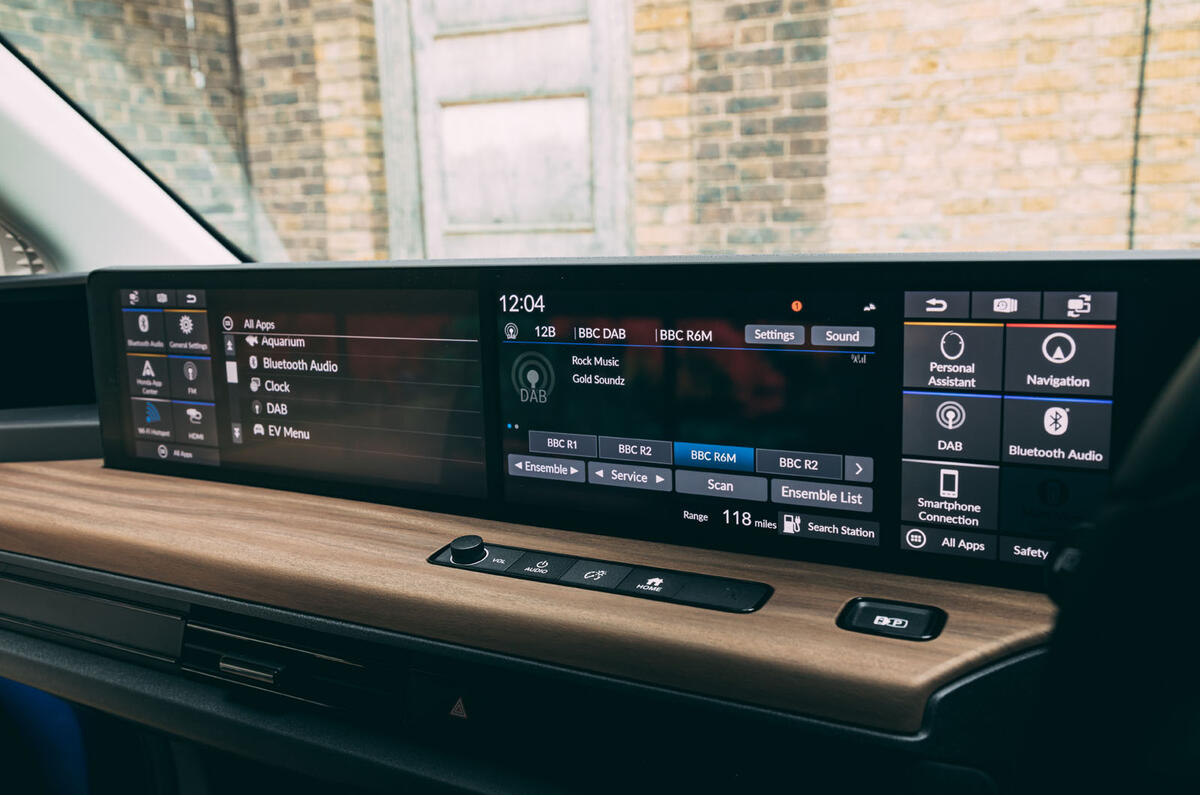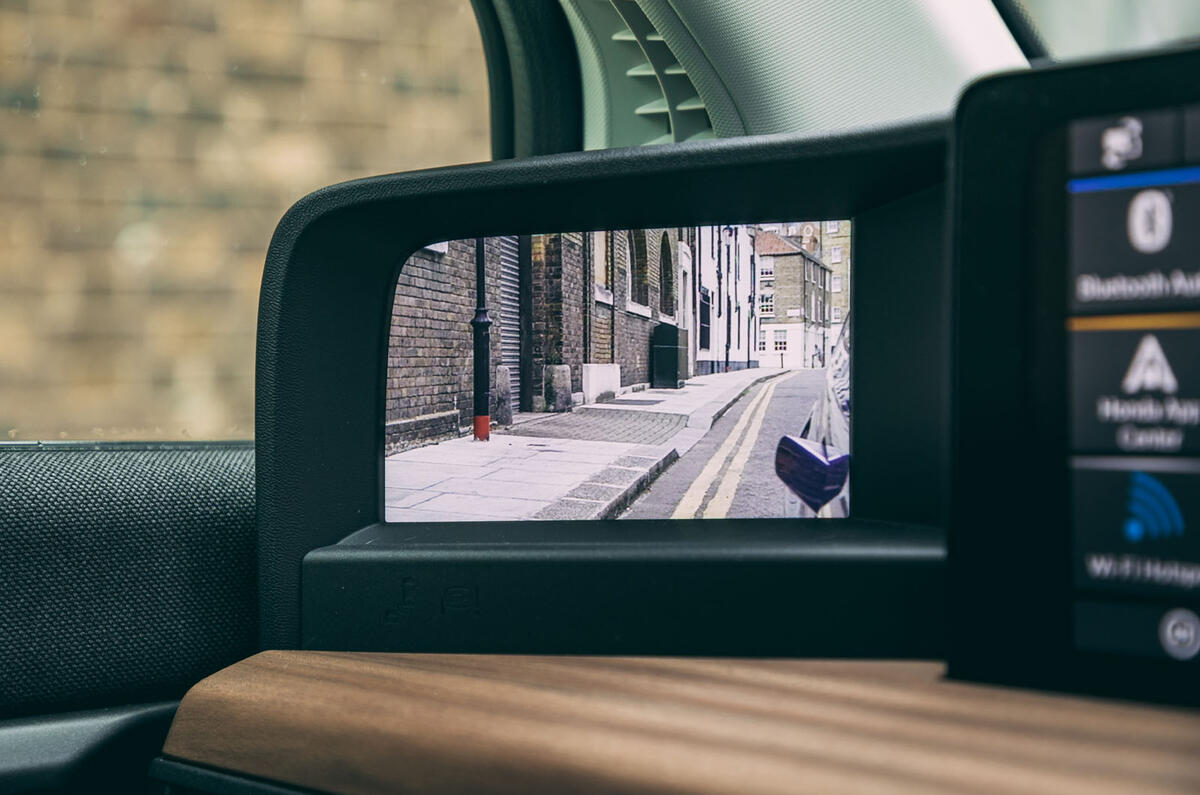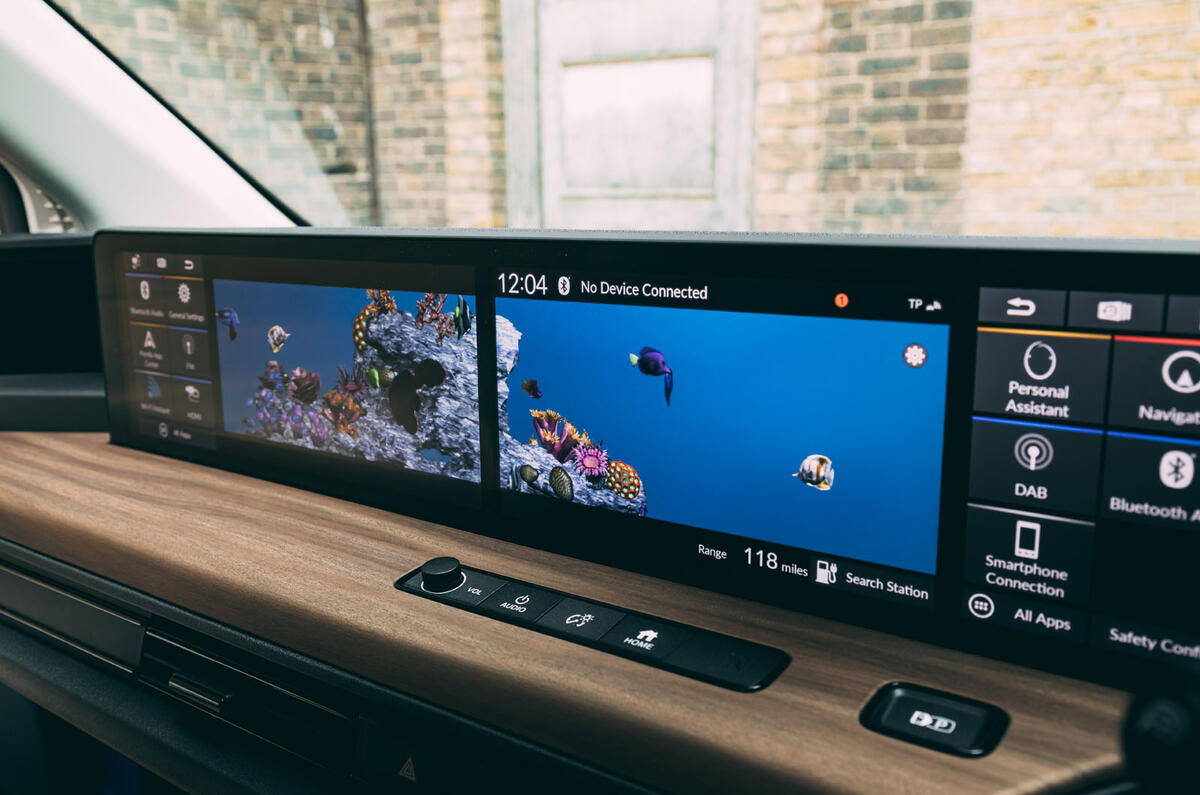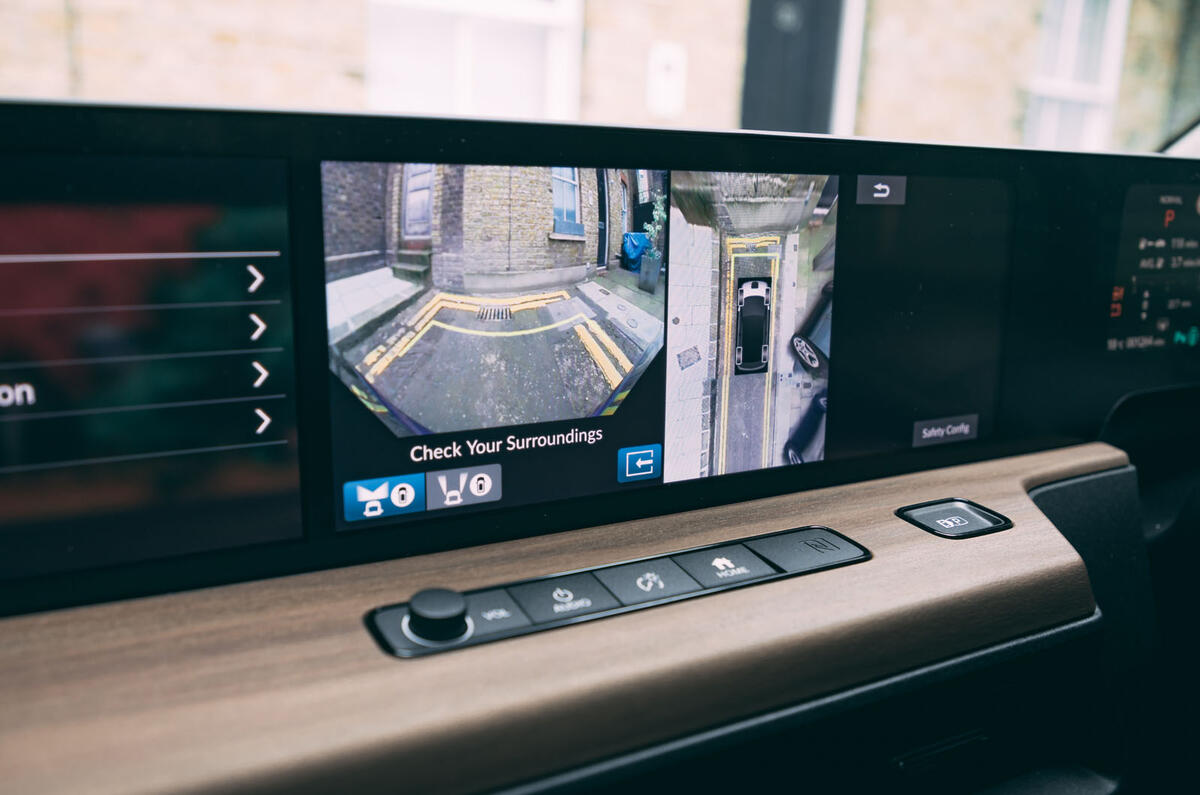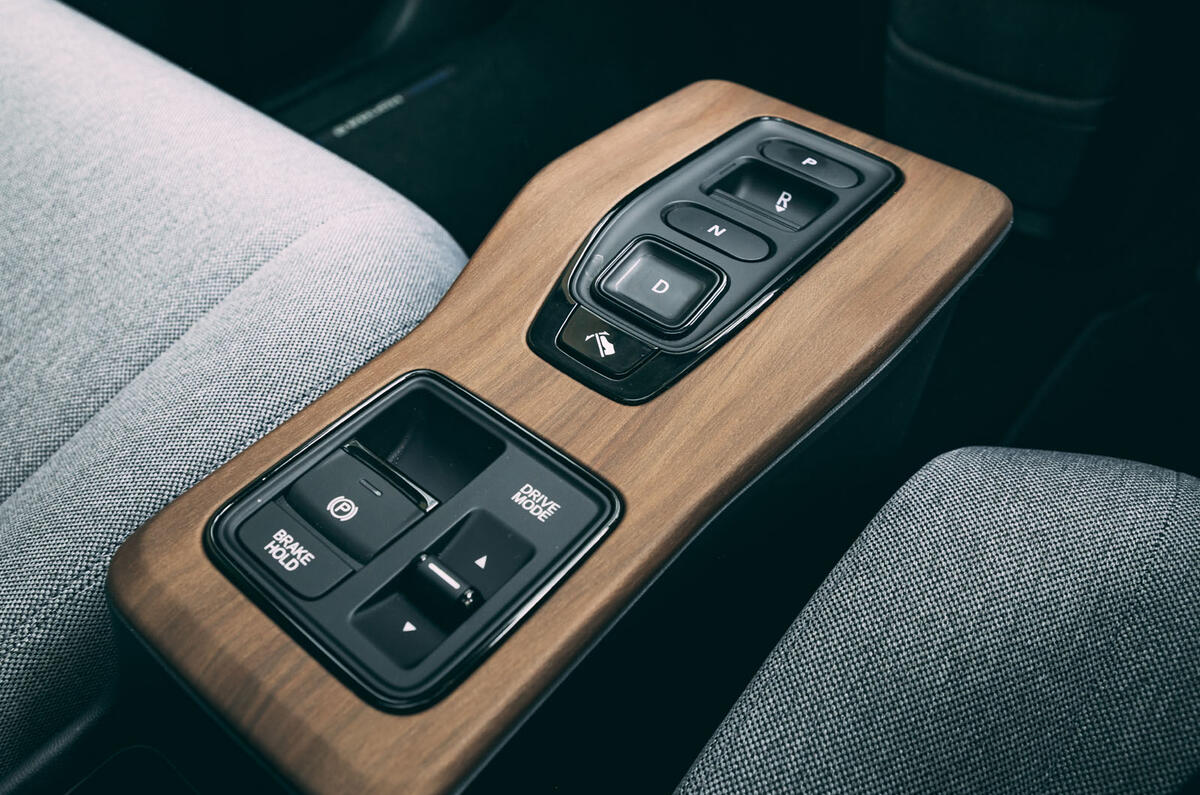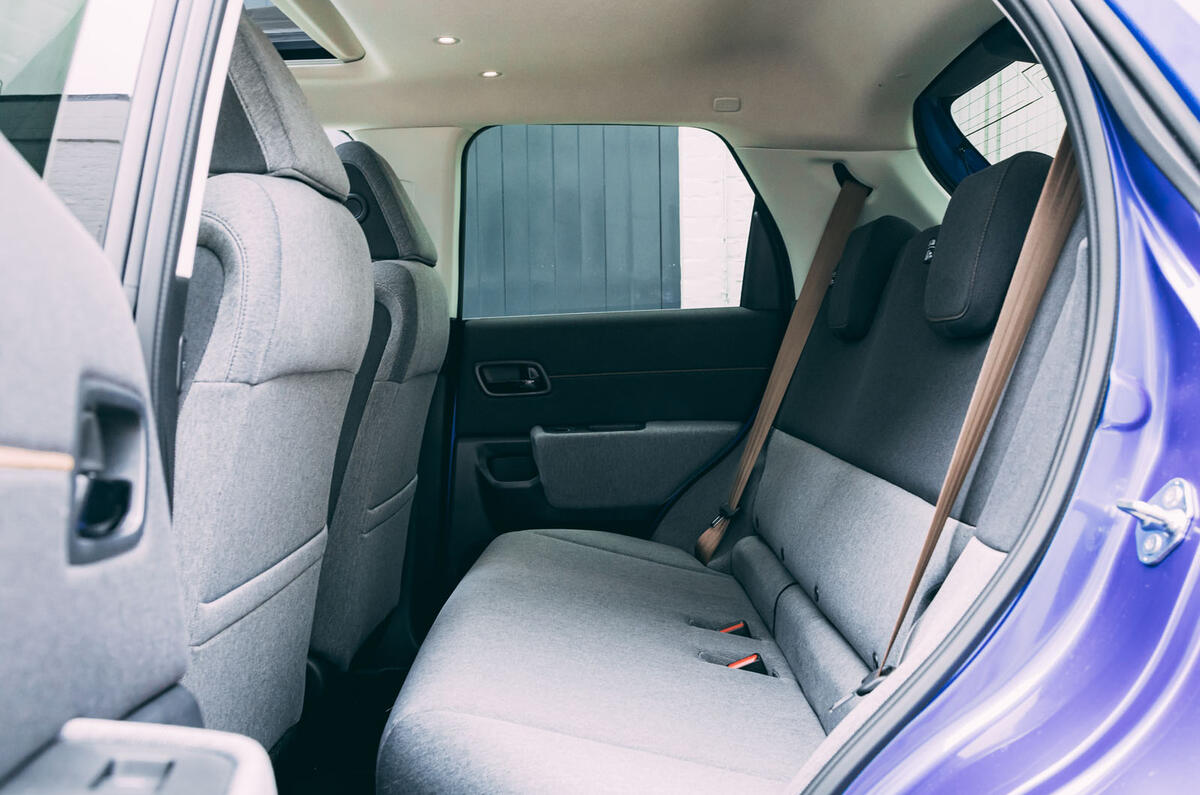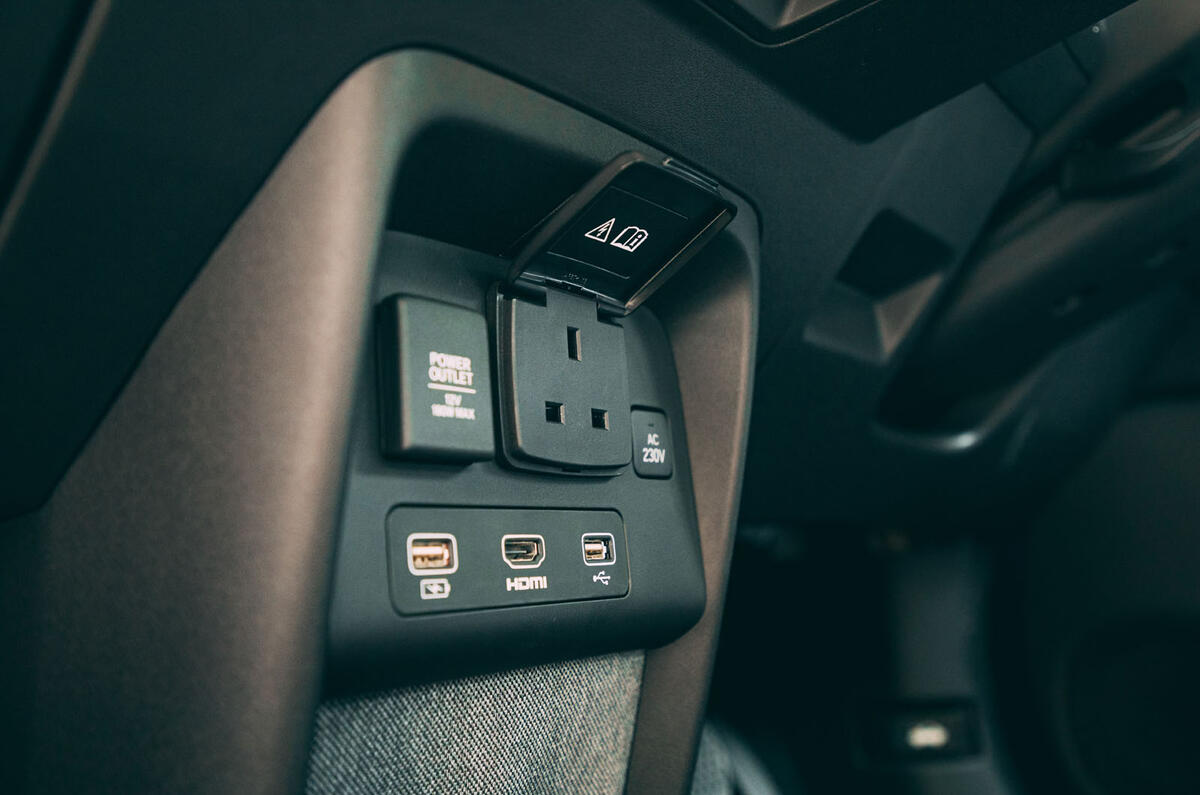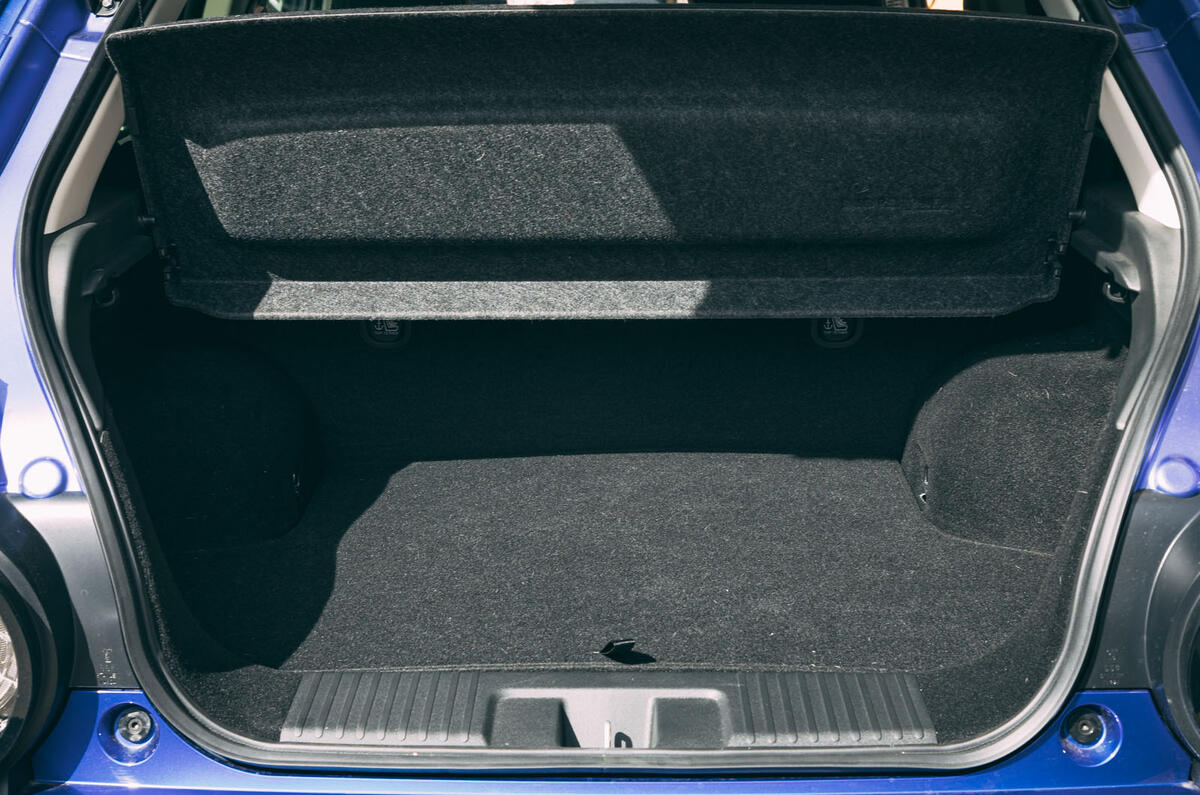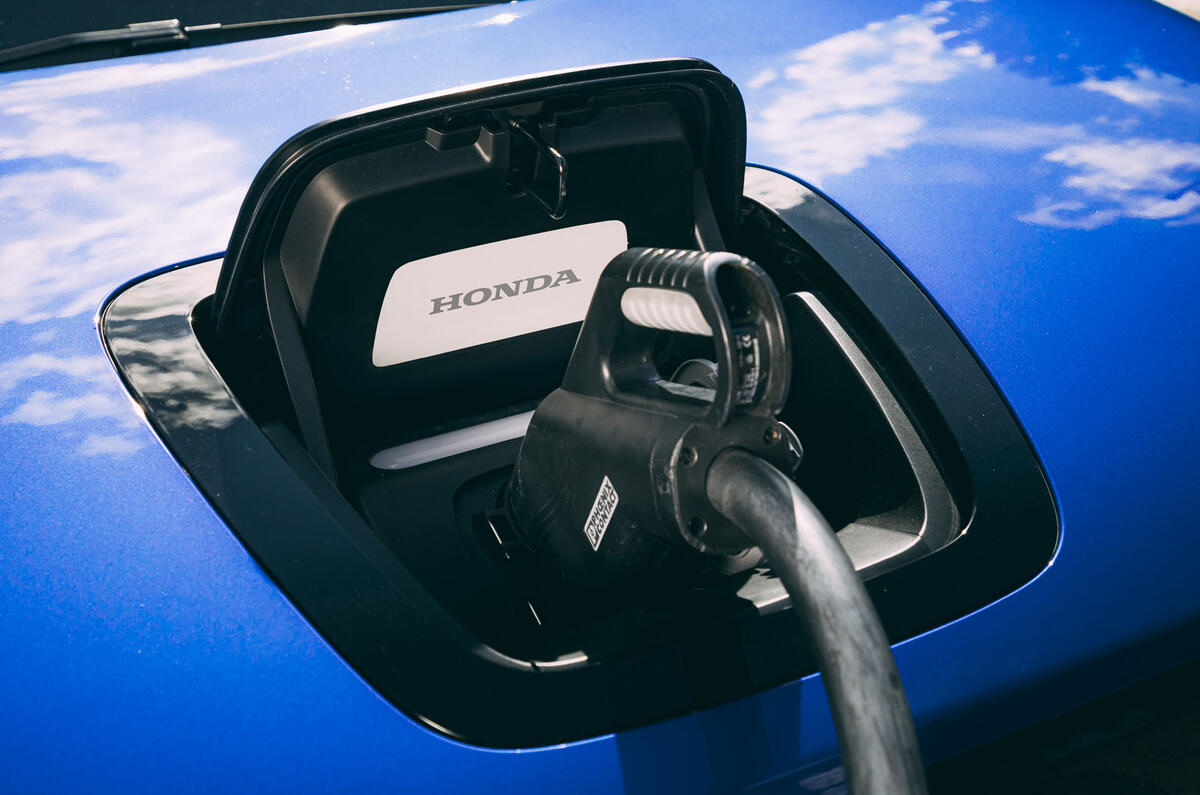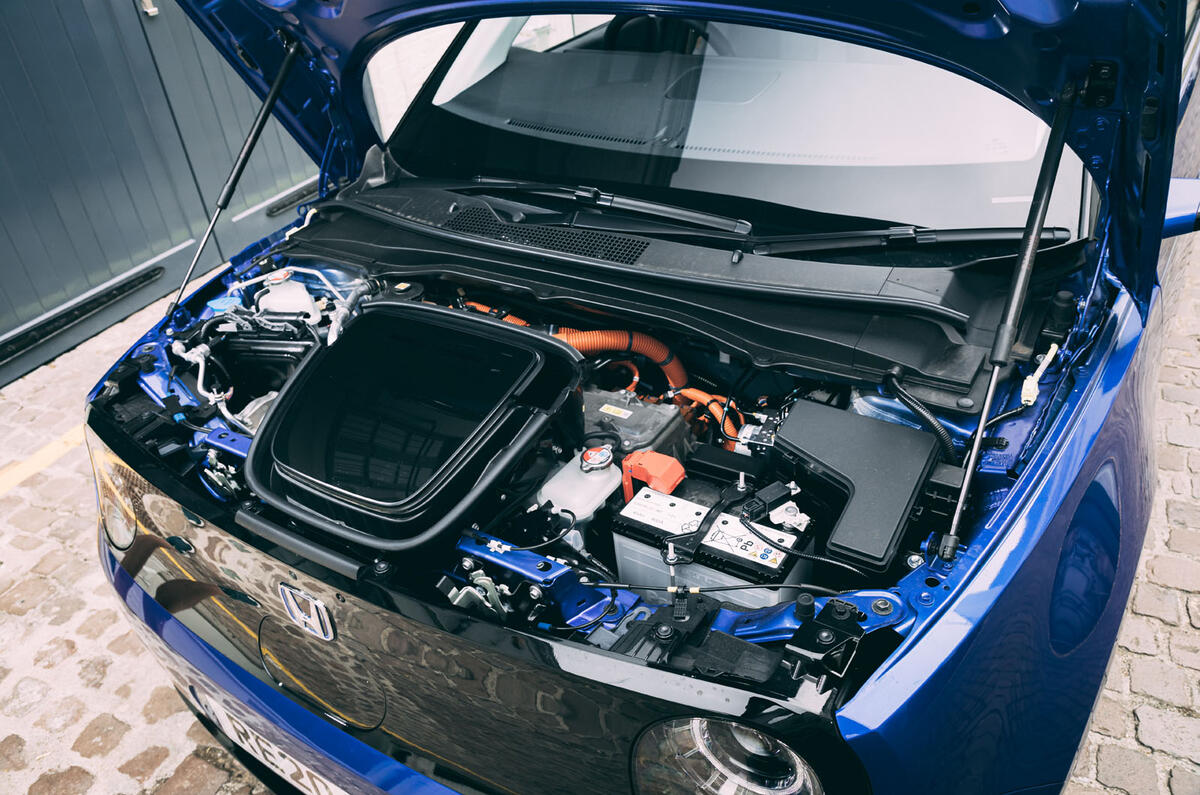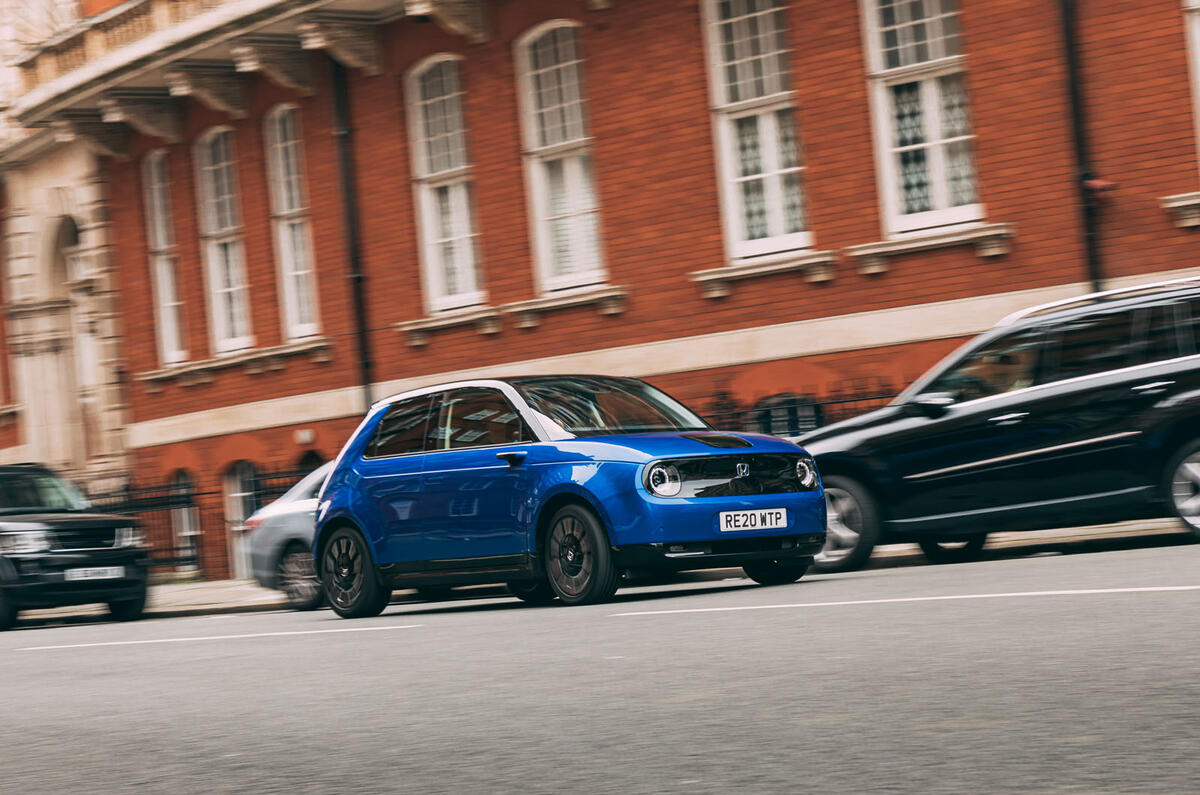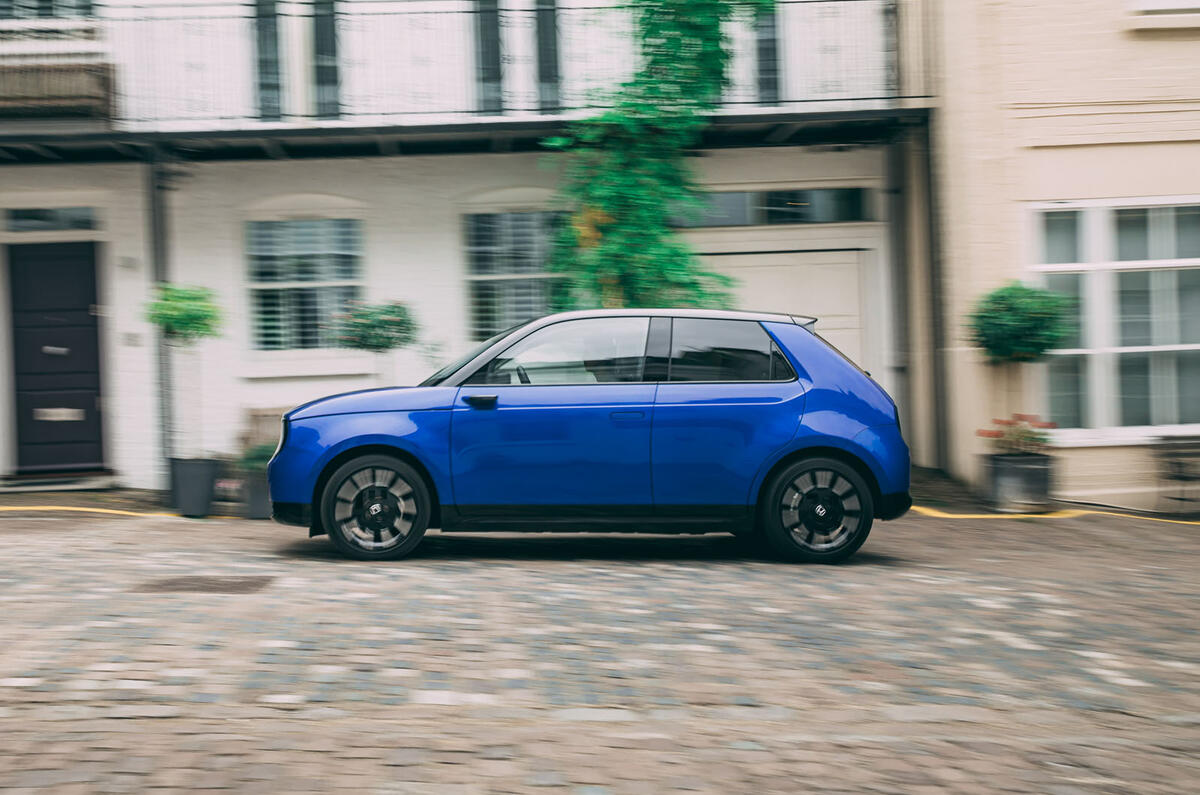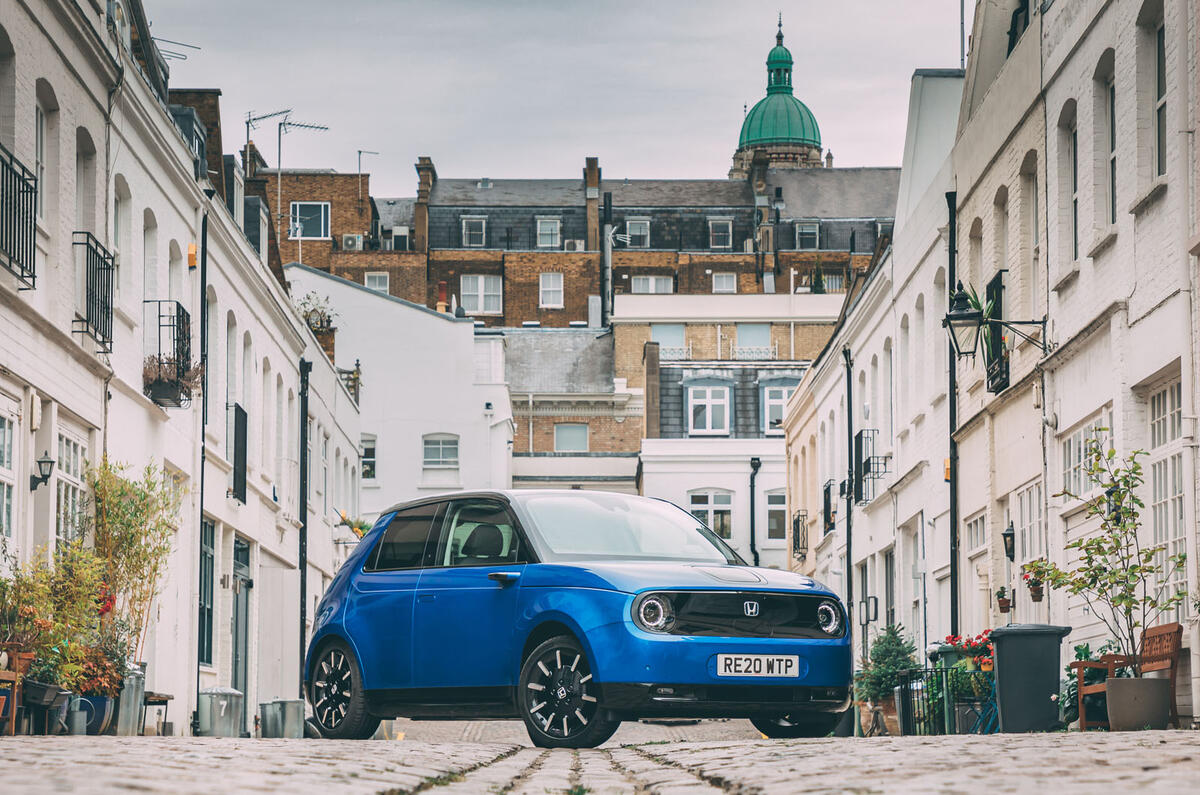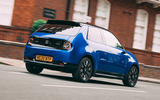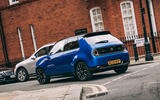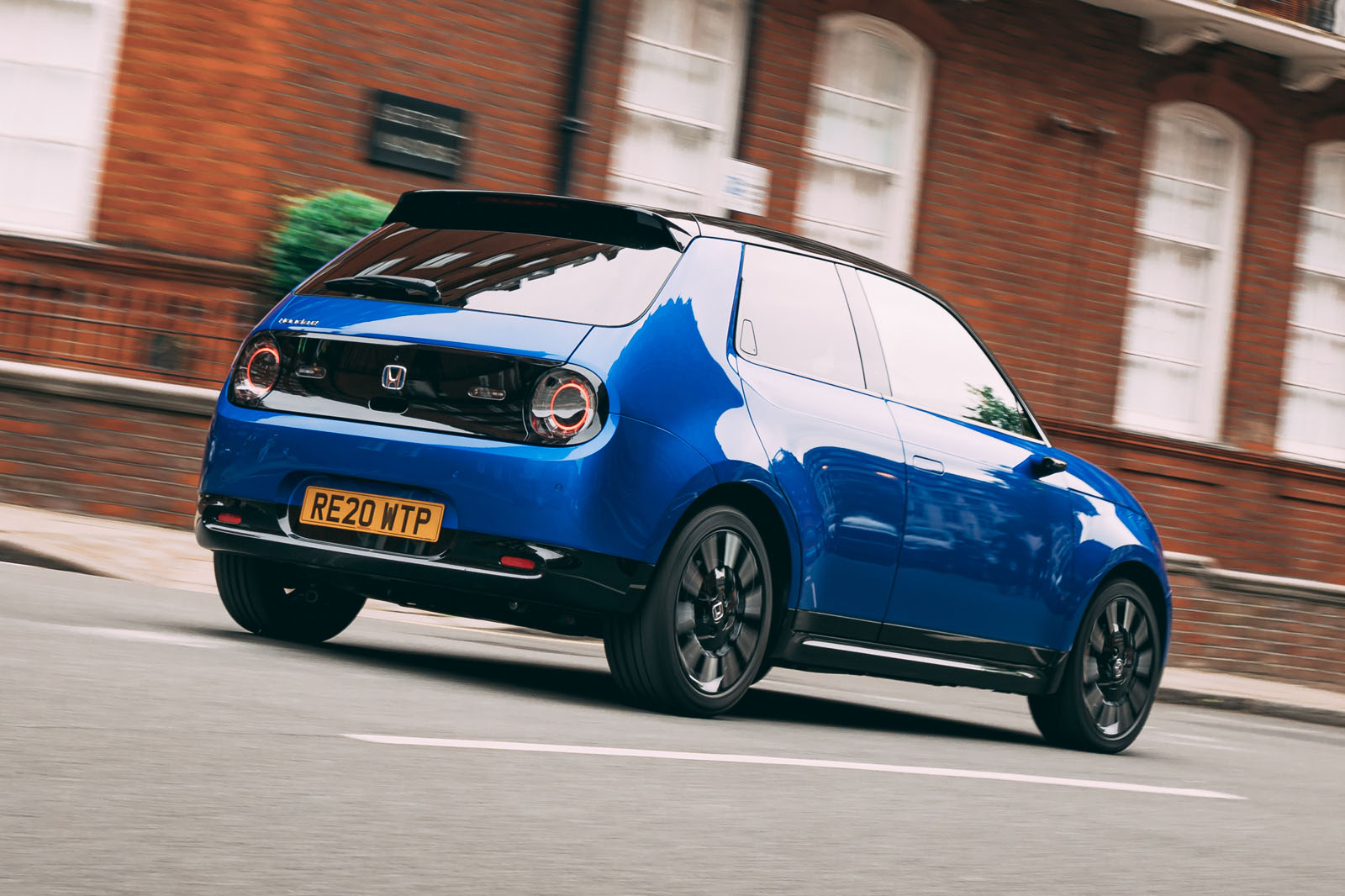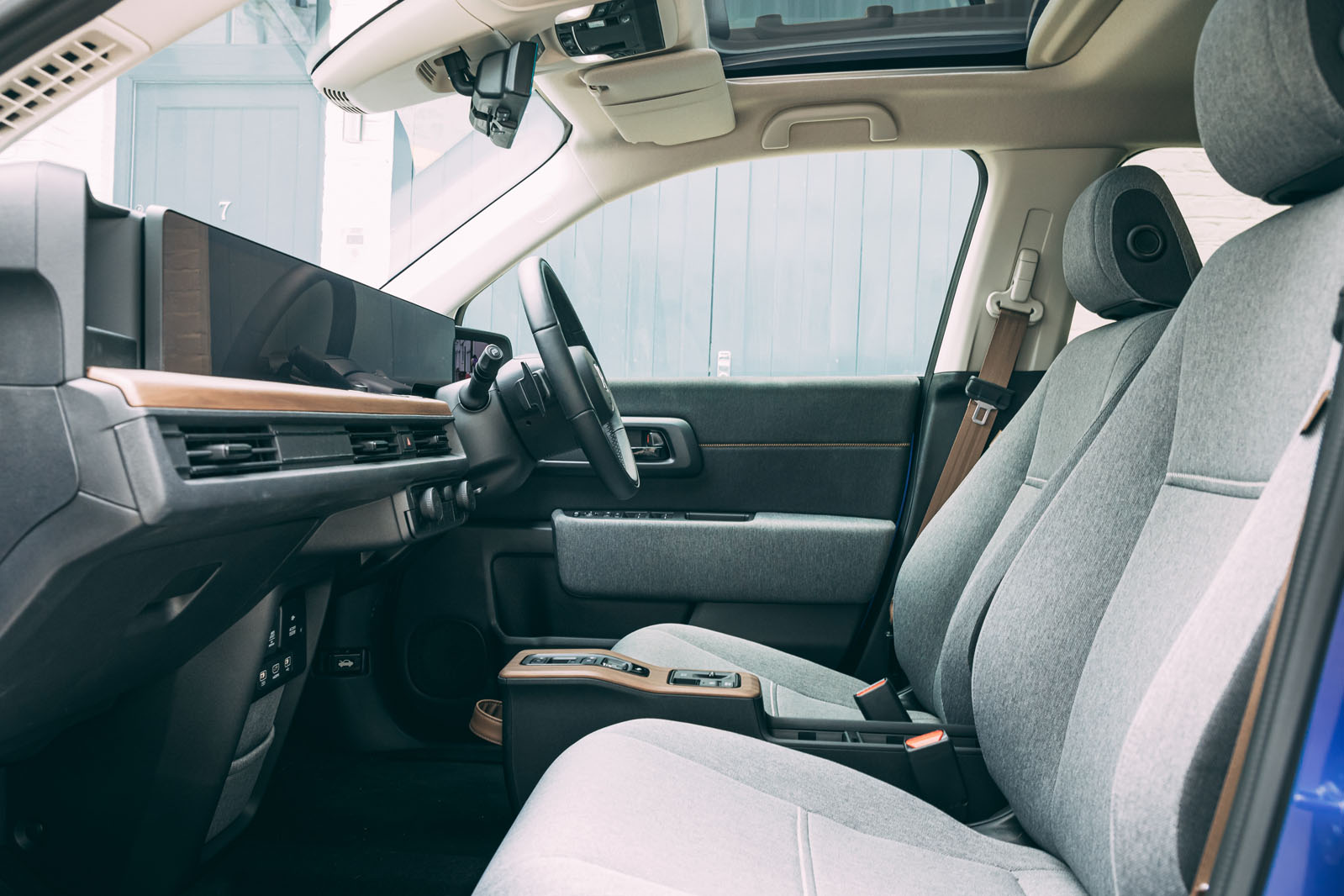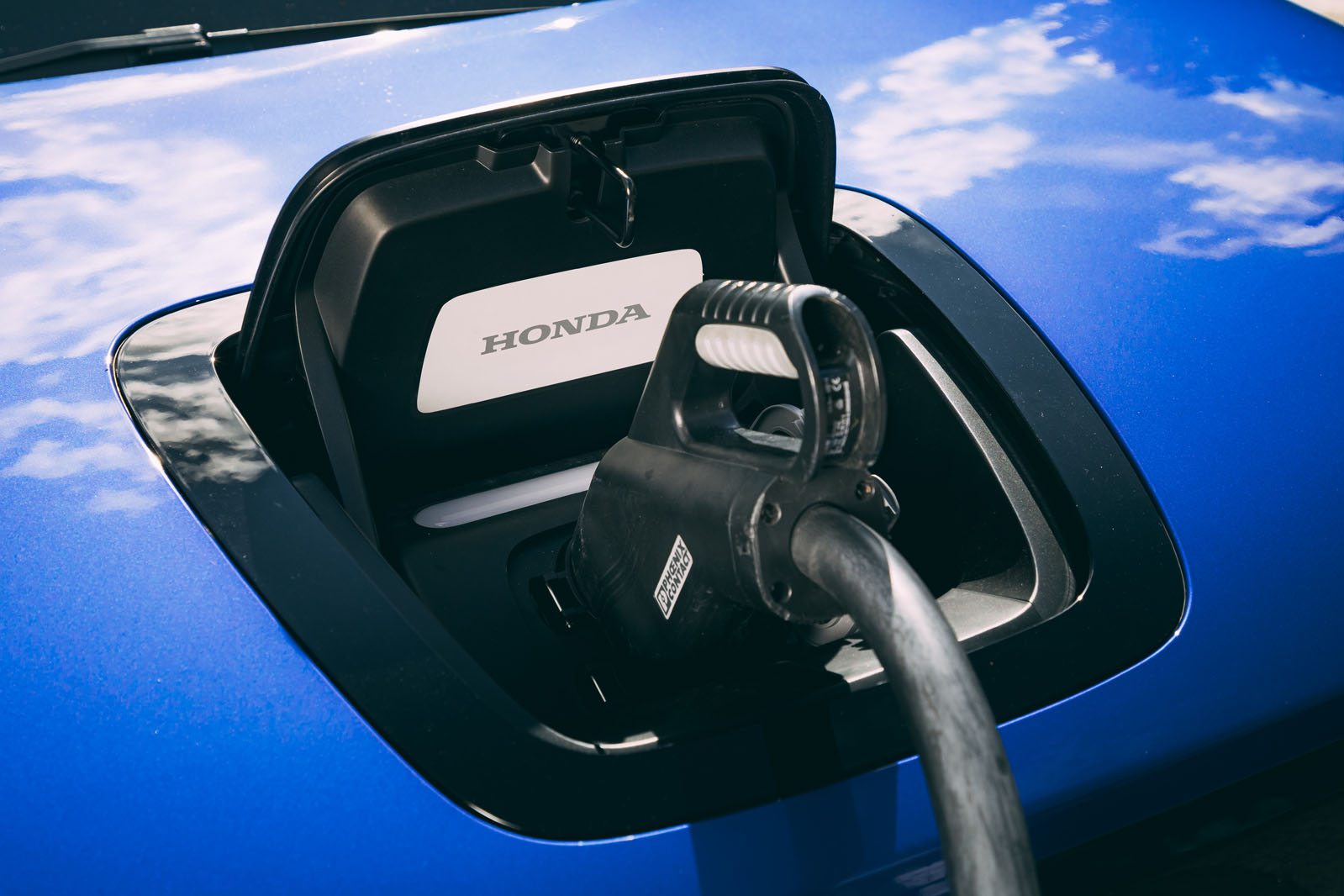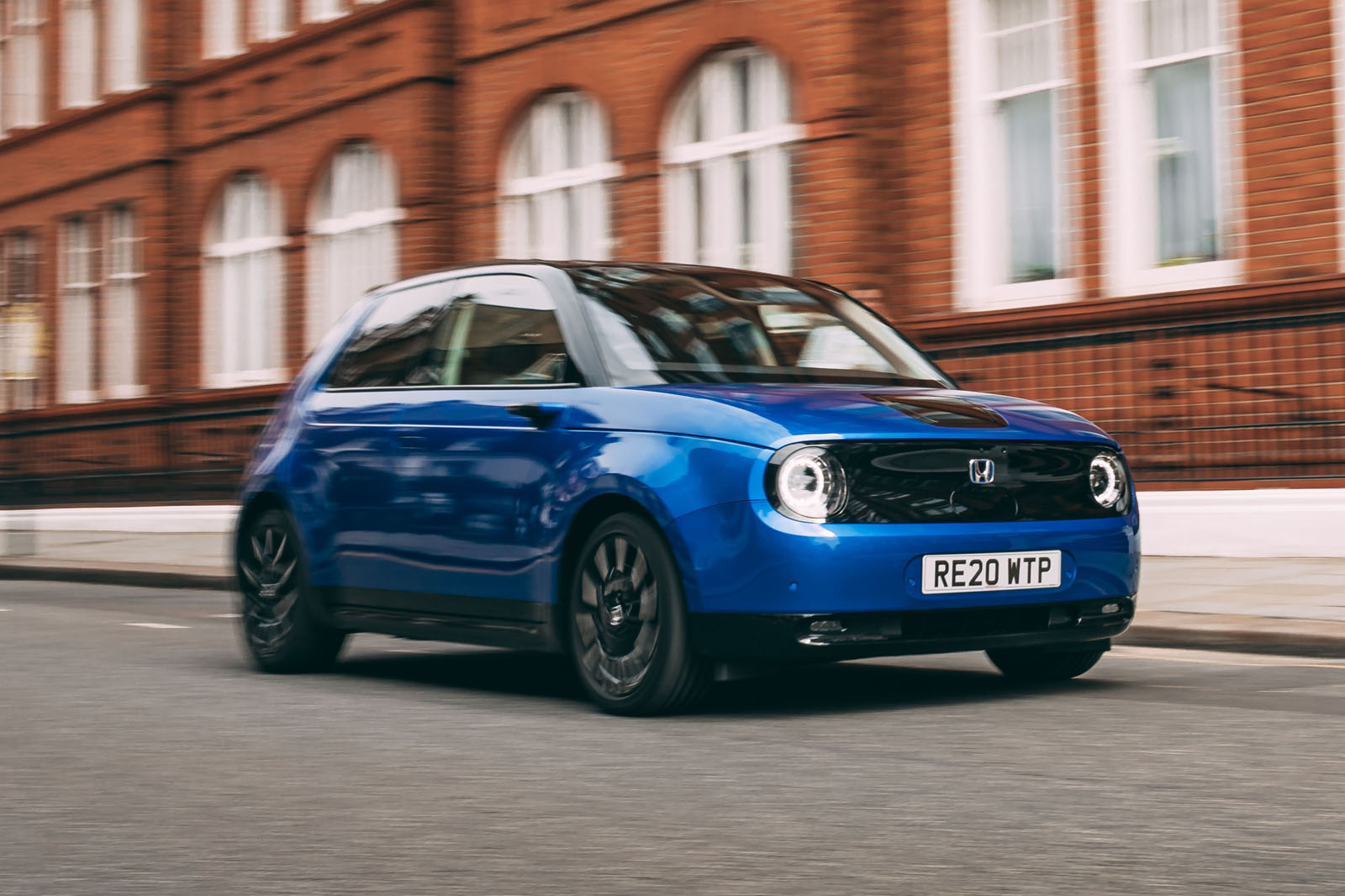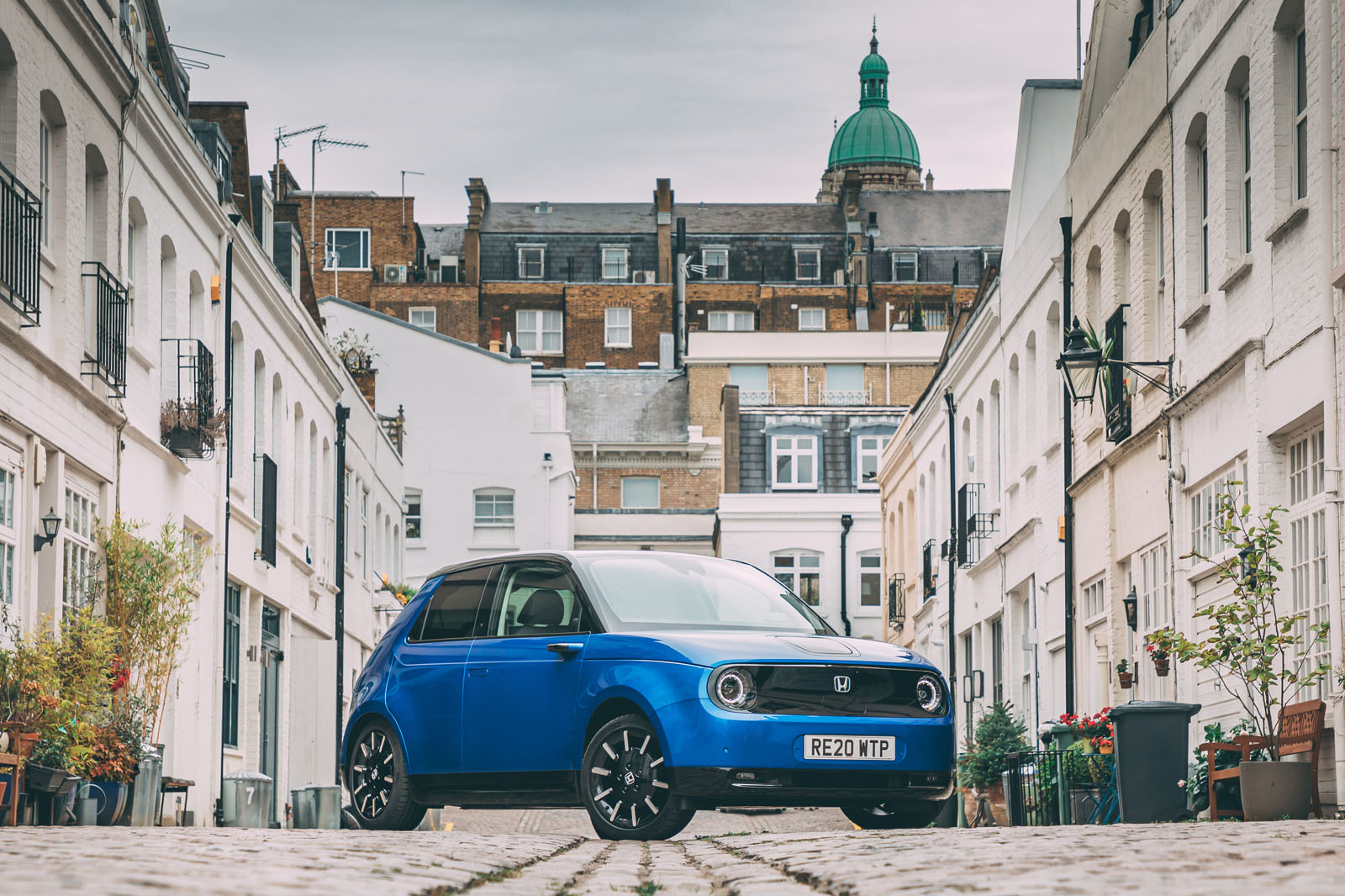Just as with the exterior, slick design appeal is a defining feature of the E’s cabin. Slide yourself down through the generously proportioned front door aperture and you’re greeted by an environment that looks and feels not just impressively airy and visually alluring but solidly built and technologically sophisticated, too.
You sit relatively perched atop seats that are wide and noticeably soft but lack a little in lateral support. They are upholstered in a smart-looking grey cloth that appears to have been lifted directly from the frame of some chic high-end sofa and extends to cover large swathes of the E’s door panels. Its presence, along with the wooden trim on the dashboard and contrasting brown seatbelts, gives the Honda a real sense of sophistication and desirability when judged against its peers – even if it’s a mite tricky to shake the feeling that we’ve seen a similar approach adopted by another rear-engined, designer EV in the past: the BMW i3.
The E’s crowning interior feature has to be the array of screens along the top of its dash. There are five in all: two for the digital door mirrors, one for the instrument binnacle and two for the infotainment system. For sheer tech appeal, you’d argue they even give Tesla a run for its money. Ergonomically, the E works well.
There’s decent adjustability in the seat base and steering column, and Honda’s decision to retain physical controls for the ventilation is to be commended, particularly when they probably could have easily been integrated into the infotainment system. There’s loads of cabin storage, too. Even rear passengers get their own cupholders.
The E is a strict four-seater and, with a taller driver in place, the second row is tight enough to induce a bit of compulsory seatback knee straddling. Our tape measure recorded a typical rear leg room figure of 660mm; that’s more than you’ll find in some full-sized superminis, so it’s no bad result for the E, but it’s also not quite enough for one average-height adult to sit comfortably behind another without a slight squeeze being necessary.
The boot is a little restrictive, with only 171 litres of seats-up storage space available below the window line. Fold the rear bench down and this opens up to 861 litres, which isn’t far off the carrying space of a normal supermini, but it isn’t likely to be enough for you to contemplate regular family service for the car other than as a short-hop runabout.
Honda E infotainment and sat-nav
You have got to credit Honda for committing to such intense interior digitisation with the E, particularly given just how clunky and difficult its infotainment systems have been in the past.
Generally speaking, the displays are impressively crisp and responsive, although there is perhaps a touch of fuzz around their borders. The 8.8in TFT instrument binnacle is clear and easy to read and it can be configured to display charge level, trip information and other driving-related fields of data.
Meanwhile, the two 12.3in infotainment screens offer a whole new level of configurability and personalisation. The dual-screen nature means passengers can interact with the radio or sat-nav and then ‘pass’ the display across to the driver at the touch of a button. It’s quite cool, although with features like Apple CarPlay included as standard, you wonder just how necessary such a set-up really is. Nevertheless, the system as a whole works far better than anything we’ve seen from Honda before.




